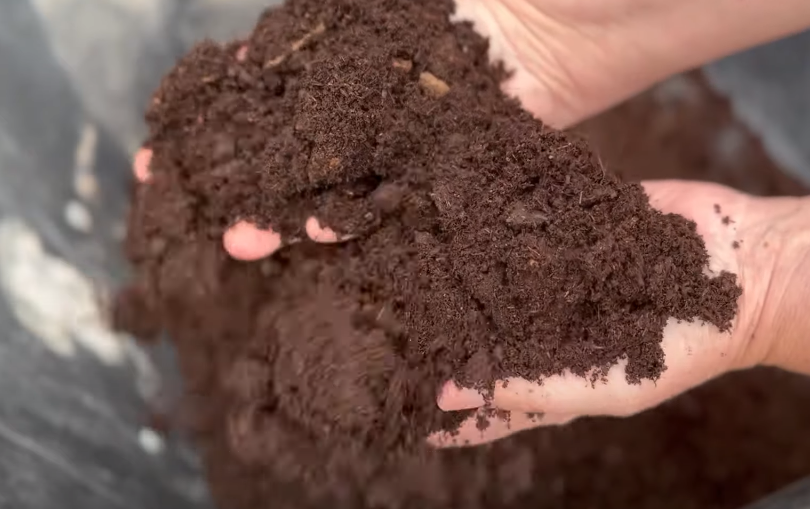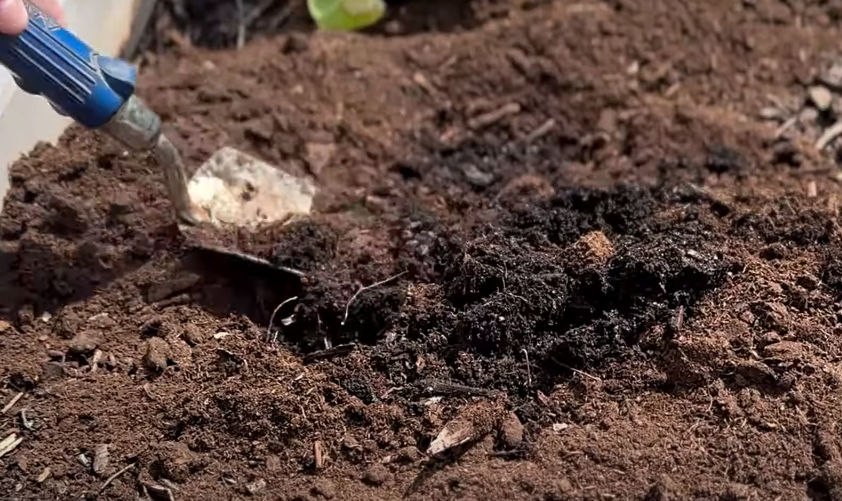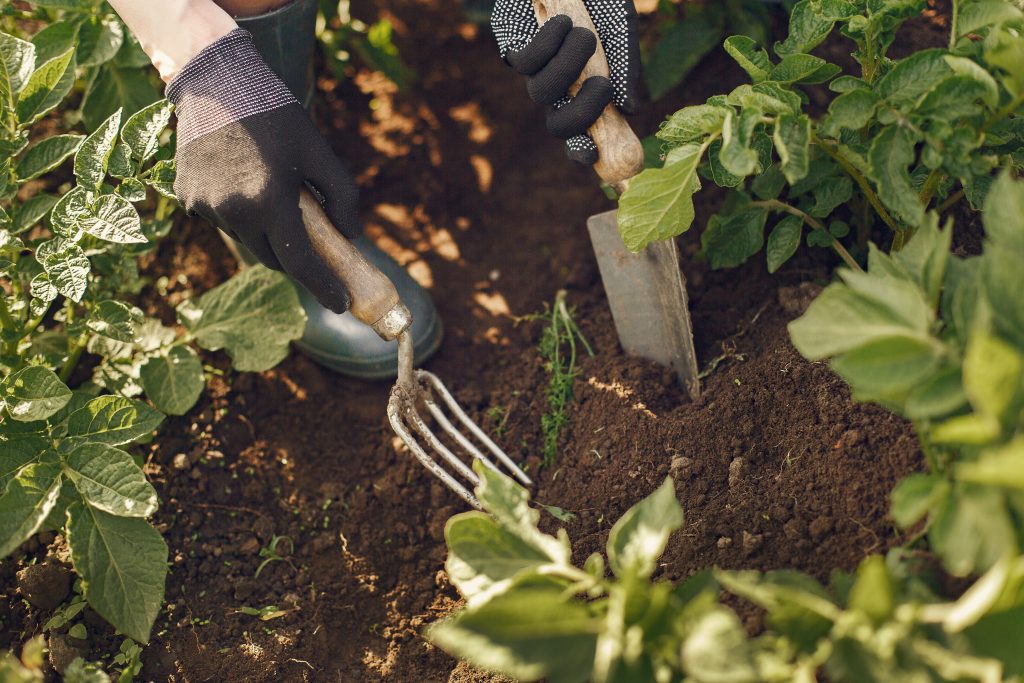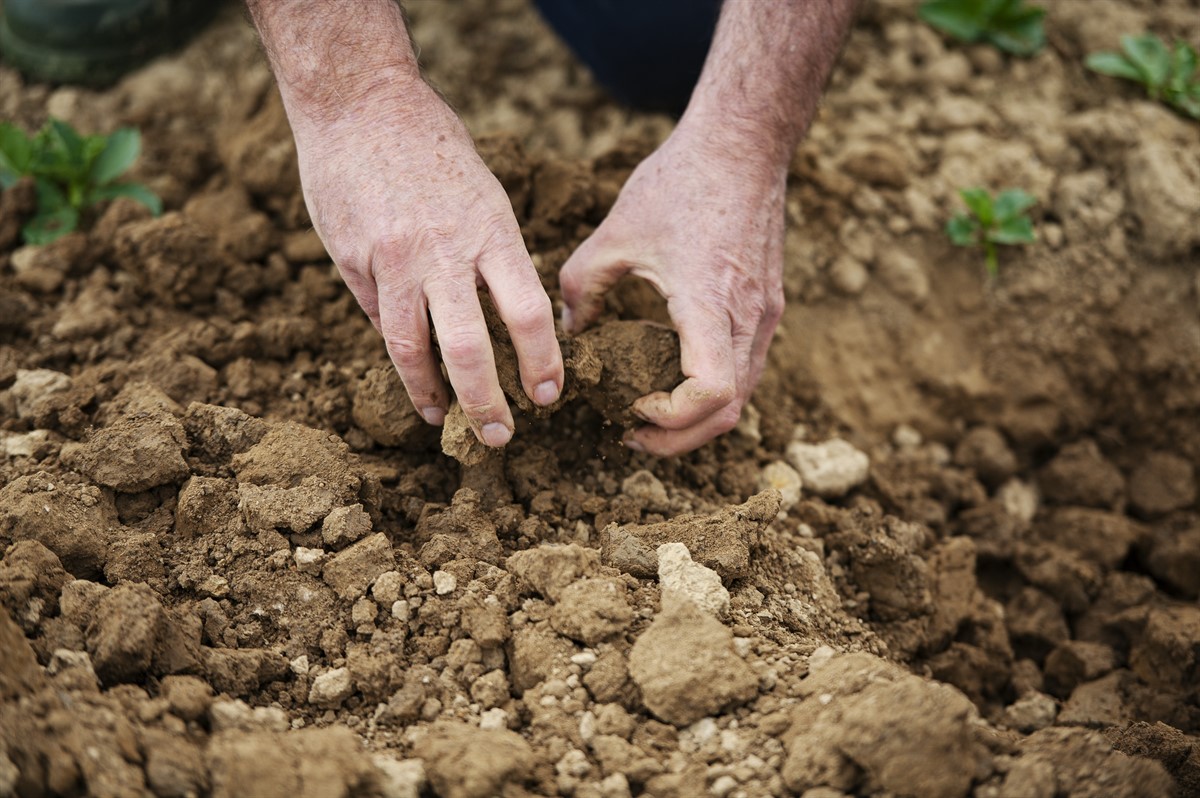Spread a layer of compost over the soil and stir it gently into the first few inches of the garden to add it. For even distribution, use a rake or shovel.
Gardeners seeking to enrich their soil’s fertility often turn to compost for a natural solution. This organic matter, teeming with beneficial microorganisms, is a powerhouse for plant growth.
Spreading a layer of compost onto garden beds before planting enhances soil structure, provides essential nutrients, and improves moisture retention.
It’s a straightforward task that pays dividends in the form of healthier plants and more bountiful harvests. An effective composting strategy boosts your garden’s productivity without relying on chemical fertilizers, making it a favorite among eco-conscious growers.
Remember to choose the right time—either in the spring as you prepare beds or after the growing season—to ensure your garden reaps the full benefits of this nutrient-rich addition.

The Magic Of Compost In Your Garden
Imagine your garden thriving, bursting with life and color. The secret? It’s all in the compost you add. This natural gold works wonders, transforming soil into a fertile haven for plants. Let’s reveal how to unlock this magic and why it’s essential for a vibrant garden.
Benefits Of Composting For Soil Health
- Improves soil structure: Compost makes the ground loose and airy, helping roots grow.
- Enhances moisture retention: Your thirsty plants will have water when they need it.
- Balances pH levels: Compost acts as a natural buffer, perfect for plant health.
- Encourages beneficial organisms: Earthworms and microbes thrive in compost-enriched soil.
What are the rich nutrients for plants?
Compost is like a vitamin boost for your garden. It’s packed with essential nutrients that plants need. Think of it as a full meal for your soil. Instead of just one vitamin, it provides a blend of many. This mix feeds your plants and keeps them strong.
| Nutrient | Benefit to Plants |
|---|---|
| Nitrogen | Helps leaves grow green and lush |
| Phosphorus | Encourages strong root development |
| Potassium | Increases plant resilience against diseases |
By adding compost, you’re not just planting a garden, you’re planting a legacy. Your plants will flourish, rewarding you with a bounty of beauty and harvest.
What is compost in basic science?
Compost serves as a cornerstone for any flourishing garden. It is rich, decomposed organic matter that improves soil structure, fosters beneficial microbes, and provides plants with essential nutrients.
Gardeners sometimes call it “black gold” because of its value in creating healthy soil. Let’s dig into what compost is and the benefits it brings to your garden.
Decomposed Organic Matter Explained
Think of compost as nature’s process of recycling. Decomposed organic matter includes leaves, plant clippings, vegetable scraps, and more. Over time, these components break down through biological processes, turning into a remarkable soil amendment that feeds your plants.
- Improves soil aeration
- Enhances water retention
- Increases nutrient content
Varied Ingredients That Make Up Compost
Compost ingredients vary widely but focus on two main types: greens and browns. Greens provide nitrogen, while browns supply carbon. Together, they create a balanced compost.
| Greens | Browns |
|---|---|
| Food scraps | Dry leaves |
| Coffee grounds | Straw |
| Grass clippings | Cardboard |
It’s crucial to balance these materials in your compost pile. A mixture of greens and browns ensures efficient decomposition.
Composting Methods To Consider
Ready to nurture your garden with the gold of gardening? Compost enriches soil, making plants thrive. Different composting methods suit varied lifestyles and garden spaces. Let’s explore some to turn your green waste into plant treasure.
Traditional Composting Techniques
Simple yet effective, traditional composting breaks down organic matter over time. Key is the balance of green (nitrogen-rich) and brown (carbon-rich) materials. Traditional techniques include:
- Heap Composting: Pile green and brown materials, turning occasionally for air flow. Takes a few months to a year.
- Bin Composting: Enclosed bins accelerate decomposition with less mess. A popular choice for small gardens.
- Tumbler Composting: Drum-like tumblers speed up the process through easy turning and constant aeration.
Innovative Approaches To Composting
Beyond traditional, consider innovative methods. Embrace cutting-edge composting that’s convenient and swift:
- Worm Composting: Vermicomposting uses worms to break down organic matter. Ideal for indoor composting.
- Bokashi: This Japanese method ferments kitchen waste, minus the odors. Its quick turnaround impresses many gardeners.
- Green Cone: A solar-powered digester that can handle all food scraps, even meat and dairy.
Each method offers distinct benefits. Some prefer the traditional patience of heap composting. Others opt for the modern speed of Bokashi. Choose what fits your garden and schedule best. Ready to mix compost in? Your garden awaits its nutrient boost. Begin today!

Selecting The Right Compost For Your Garden
Choosing the right compost is a critical step in nurturing your garden. The perfect compost enriches the soil, helping your plants flourish.
Identifying High-quality Compost
To recognize high-quality compost, look for these traits:
- Dark and crumbly texture
- Pleasant, earthy smell
- Free of large chunks and debris
- Contains a mix of organic material
Homemade Vs. Store-bought Compost
| Homemade Compost | Store-Bought Compost |
|---|---|
| Personal control over materials | Convenience |
| Time to mature | Instantly usable |
| Cost-effective | Variety of choices |
Determine if you prefer the personal touch of homemade compost or the ease and diversity store-bought options offer.
When to Apply Compost
Knowing the perfect time to add compost can supercharge your garden’s health. Just like a well-timed fertilizer can boost your plants, picking the right moment for compost does wonders. Let’s dig into the best times to enrich your soil!
Best Seasons For Composting
- Spring: Air and soil warm up, perfect for mixing compost into garden beds before planting.
- Autumn: Prepares the soil for next year, giving compost time to integrate and nourish it.
Both seasons work well because they align with your garden’s natural cycle. In spring, compost supports new growth. Autumn composting improves soil for the future.
Understanding Plant Growth Cycles
Plants have different needs throughout their life. Use this to your advantage with timing your compost addition.
| Plant Stage | Composting Action |
|---|---|
| Seedlings | Add light compost to avoid burning new plants. |
| Peak Growing | Side-dress with compost for a nutrient boost. |
| Post-Harvest | Spread compost to restore soil after a growing season. |
Follow plant cycles to align composting action for healthy, productive growth.
How do you prepare compost for planting?

Every garden yearns for replenishment to thrive abundantly. Nutritious, well-structured soil forms the backbone of a lush garden. Compost enriches soil, but before unleashing its benefits, preparation is key.
Soil Testing For Nutrient Levels
Knowing what your soil already has is crucial. A simple soil test can reveal much about nutrient balances and pH levels, helping you tailor the compost addition to your garden’s specific needs.
- Test soil in various garden spots
- Look for pH levels and key nutrients
- Adjust compost blend accordingly
Clearing And Cultivating The Right Spaces
A clean space ensures compost integrates well. Clear debris and weeds first. Upturning the soil—known as tilling—creates a welcoming environment for compost.
- Remove rocks, weeds, and waste
- Till the soil to about 12-15 inches deep
- Rake the area flat for even compost application
Take these simple steps seriously, and the garden ground will be set for compost. The transformation into a fertile haven awaits.
Step-by-step Guide To Applying Compost
Welcome to our Step-by-Step Guide to Applying Compost in your garden. Using compost is essential for enriching soil, supporting plant health, and optimizing garden vitality. This easy-to-follow guide ensures you maximize the benefits of your compost.
Layering Techniques For Optimal Results
Proper layering is the secret to effective compost application. These steps will streamline the process:
- Clear the area of weeds and debris.
- Spread a 2-inch layer of compost over the garden bed.
- Mix the compost gently with the existing soil.
- Water the layer lightly to help compost settle.
Ensuring Even Distribution
Even distribution is vital. It ensures plants get equal nutrients.
- Use a rake or spade to spread compost.
- Aim for a uniform spread across the garden.
- Walk in a grid pattern to avoid missing spots.
Composting Challenges And Solutions
Turning kitchen scraps and yard waste into nutrient-rich compost is a cornerstone of eco-friendly gardening. Yet, many gardeners encounter challenges. This section delves into common issues and provides practical solutions for successful composting.
Dealing With Common Compost Problems
Odor often signals an imbalance. Add more browns like dried leaves to reduce smell.
Pests may visit your pile. Enclose your compost in a bin with a lid to keep them out.
Slow decomposition can be frustrating. Turn your pile to aerate it. This speeds up the process.
- Wet and soggy compost needs more dry material to absorb excess moisture.
- Too dry compost requires water. Sprinkle on just enough to dampen it.
Adapting Your Strategy For Different Climates
In cold climates, composting slows in winter. Insulate your pile with straw bales to retain heat.
Hot climates dry compost out quickly. Shade your compost bin and keep it moist to prevent drying.
Humid conditions may over-saturate the pile. Cover it to keep excess rain out and balance wetness.
- Collect leaves in the fall for brown material in winter.
- Use a compost tumbler to maintain warmth and aeration.
- Make sure your compost gets enough shade during intense heat.
Maintaining Soil Health Post-composting
After adding compost to your garden, the journey to a thriving garden is not over. It is vital to maintain soil health to ensure your plants grow and the ecosystem stays balanced.
The key to post-composting success lies in routine soil care and vigilant monitoring.
Routine Soil Care Practices
Keeping soil healthy after composting involves several ongoing actions:
- Mulching: Apply mulch to conserve moisture and control weeds.
- Watering: Water plants regularly to help soil absorb nutrients.
- Plant rotation: Rotate crops to prevent soil nutrient depletion.
- Additional compost: Add more compost periodically to enhance fertility.
Remember to keep soil loose by not stepping on the planting beds.
Monitoring Changes And Taking Action
Observe your garden’s soil closely after composting:
- Look out for signs of poor soil health like slow plant growth or yellowing leaves.
- Use a soil test kit to check nutrient levels and pH values.
- Adjust your soil care routine based on test results and observations.
Take action quickly if the soil seems unhealthy. For example, add lime to raise pH, or sulfur to lower pH.
Regular check-ins with your garden will ensure that your soil remains a fertile foundation for your plants long after the initial compost application.

Credit: www.nfuonline.com
From Garden To Plate: Compost’s Impact On Food Quality
From Garden to Plate: The magic begins in the rich, dark earth of a well-tended garden. Quality compost acts as a nutrient powerhouse for growing plants. It fuels them with the essentials needed for exceptional growth.
Taste The Difference With Compost-grown Produce
Imagine biting into a tomato that bursts with flavor, its sweetness unmatched. This is the power of compost. By adding compost to your garden, you infuse life into your soil.
Plants absorb these nutrients, leading to more flavorful, vibrant produce. Studies confirm that compost-grown fruits and vegetables often taste better and may even hold more nutrients.
- Better taste and texture
- Higher nutrient content
- Longer shelf life
The Environmental Benefits Of Sustainable Composting
Eco-friendly gardening goes beyond personal gain. It extends to global benefits. Sustainable composting reduces greenhouse gas emissions by diverting organic waste from landfills.
It enriches the soil, which helps in fighting soil erosion. Furthermore, composting conserves water by improving soil structure and water retention.
| Benefit | Impact |
| Reduces Waste | Less trash in landfills |
| Conserves Water | Healthier plants with less water |
| Improves Soil Health | Stronger plants and better yield |
Frequently Asked Questions
When Should Compost Be Added To A Garden?
Composting can be added to a garden during the spring or fall. These times offer optimal conditions for compost to integrate with soil. In the spring, compost provides nutrients for the growing season. In the fall, it enriches the soil for the next year.
What Is The Best Way To Apply Compost?
The best way to apply compost is by spreading a 2-to-3-inch layer over the soil and gently mixing it into the top few inches. Pay special attention to areas around plants, but avoid direct contact with their stems or trunks to prevent rot.
Can Compost Be Over-applied?
Yes, over-application of compost can be harmful. It can lead to excessive nutrient build-up, soil compaction, and reduced plant growth. Aim for a balanced application, maintaining a few inches of compost integrated into the topsoil.
How Much Compost Do I Need For My Garden?
Calculate the amount of compost needed based on your garden size. Generally, a layer of one inch of compost for every 100 square feet of garden space is sufficient. For larger gardens, it’s often measured in cubic yards.
Conclusion
Embracing compost use in your garden is a game-changer for soil health and plant vitality. By adding nutrient-rich compost, you rejuvenate your garden’s ecosystem. Remember, moderation and proper technique ensure your plants thrive. Happy gardening as you transform waste into growth and embrace nature’s recycling plan!






7 Responses
yea